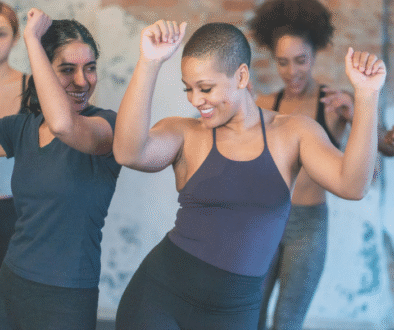Reclaiming Control: Seven Ways to Take Charge of Your Own Health and Well‑Being
By Kim Thomas, guest contributor
There’s a moment when the noise quiets and you catch yourself thinking: Is this how I want to feel? For many, that flicker of awareness marks the beginning of real change. Health isn’t a one-time overhaul — it’s a pattern of small moves, chosen consciously, repeated consistently, and reclaimed daily. If you’re ready to step in and take more ownership of your well‑being, start here — not with perfection, but with rhythm.
Squeezing in 60‑Second Wind‑Downs
You don’t need a sabbatical to slow your roll. Sometimes all it takes is a minute — literally. Sixty seconds, door closed, phone down, breath deep. When you train your body to recognize those micro-pauses as a signal of safety, you change your stress baseline. Work breaks don’t have to mean scrolling. They can be resets. The art is in embedding quick rituals that don’t feel like one more thing on your to-do list. You’re not escaping. You’re recalibrating. Squeezing in 60‑second wind‑downs can interrupt cortisol loops and restore clarity — even mid-meeting.
Bolstering Your Mental Health With Meditation
Here’s where it lands: intentionality. You’re not fixing your life in a weekend. You’re choosing better, one decision at a time. And that includes the choice to pause, breathe, and observe — without panic, without judgment. That’s where meditation fits in. It doesn’t ask you to be still forever. Just still enough to hear what’s true under the noise. Whether you’re navigating burnout, rethinking your habits, or trying to reclaim some rhythm, bolstering your mental health with meditation gives you a tool that flexes with your life, not against it.
Shifting Your Nervous System With Breathing
Here’s something your body has known longer than you’ve been paying attention: breath changes brain chemistry. You don’t need a therapist in your pocket when you’ve got a set of lungs and five minutes. Stress hijacks your nervous system fast. But breath — deep, slow, patterned — shifts the chemistry just as quickly. Think of it as a secret override switch. When your thoughts are spiraling, don’t argue with them. Out-breathe them. You’ll feel it within moments. It’s not abstract. It’s chemical. Shifting your nervous system with breathing is how regulation starts, from the inside out.
Pairing Physical Activity With Joy
Forget reps and sets for a second. Instead, ask: what movement makes you grin? Or even smirk a little? That’s the entry point. Joy is a better motivator than guilt. You don’t have to run a 5K. You can dance in the kitchen, take a brisk walk while blasting music you wouldn’t admit to liking, or bike just to feel the wind hit differently. Movement shifts mood through chemistry and momentum — it’s endorphins and inertia teaming up. If you can tie exercise to pleasure, you’re halfway there. Pairing physical activity with joy isn’t a luxury — it’s the foundation of sustainable change.
Choosing Foods to Steady Your Emotions
Your brain runs on glucose. Your moods? They’re often just blood sugar in disguise. Forget the diet talk for now — this isn’t about cutting or tracking or optimizing. It’s about stability. When you eat in ways that steady your internal terrain, you stop chasing the next fix. That’s not willpower; that’s chemistry on your side. Protein at breakfast. A little fat to slow the spike. Color on your plate. Those decisions aren’t aesthetic — they’re strategic. You are what you eat, yes, but also when and how you eat it. Choosing foods to steady your emotions can be the quietest, most effective form of mood management.
Meeting Feelings Before Reaching for Food
Sometimes the craving isn’t about the cookie. It’s about the unresolved sentence behind the craving. “I need…” and the rest goes unspoken. That’s where emotional eating lives — in the blank space. The answer isn’t shame. Rather, it’s curiosity. Pause before the grab. Ask what’s underneath. Are you lonely? Anxious? Bored? The food is real, but so is the feeling. And you’re allowed to meet the feeling first. No fixing. No punishment. Just noticing. Meeting feelings before reaching for food is the beginning of real freedom, not control.
Building Habits That Invite Deep Sleep
Sleep hygiene isn’t about lavender spray and chamomile tea. It’s about consistency, cueing, and boundaries. Your body wants to sleep — it just needs your help remembering how. That means cutting the blue light earlier. That means eating dinner with enough space before bed. That means letting the day end — actually end — not just fizzle out with another scroll. Sleep doesn’t just restore energy; it recalibrates hormones, sharpens memory, and resets emotional regulation. Building habits that invite deep sleep might be the single most radical act of self-respect you commit to.
This isn’t about life hacks. It’s about life tuning — subtle adjustments made from a place of respect, not repair. When you shift how you treat your body, how you speak to your mind, and how you plan your moments, you change what your life feels like — day by day. No overhaul needed. Just one honest move at a time.
Discover the path to a healthier you with My Gut Instinct and explore resources that empower you to make informed wellness choices!



